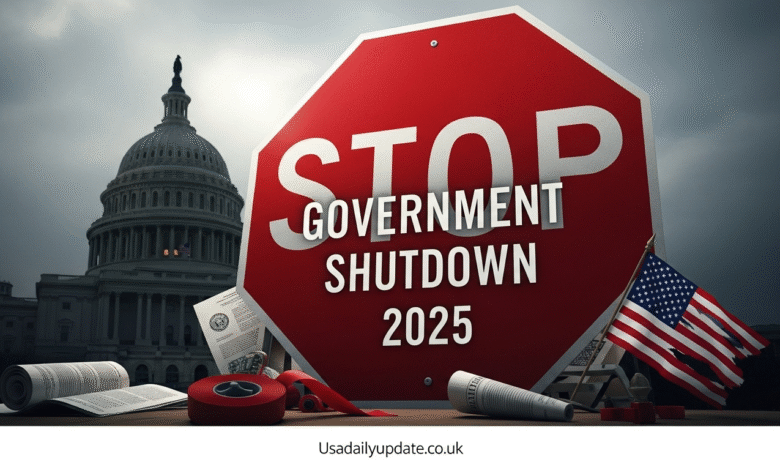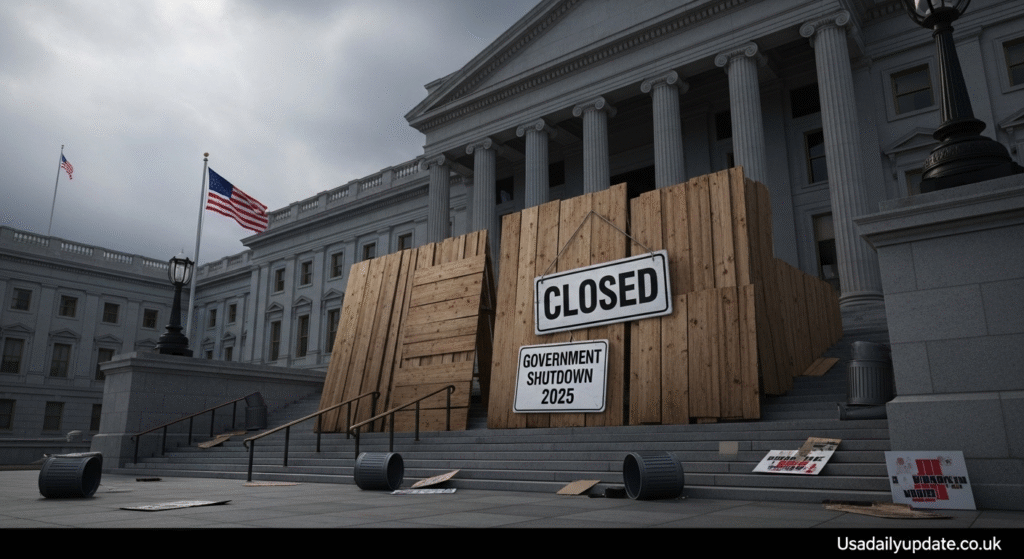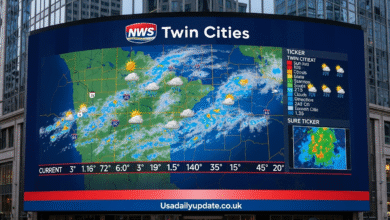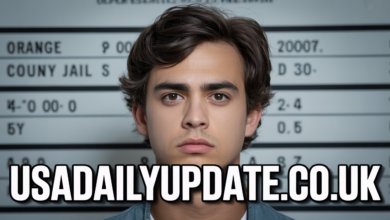Government Shutdown 2025: Critical Facts You Can’t Ignore

Introduction
The federal government officially entered a shutdown at 12:01 a.m. Wednesday amid an impasse on Capitol Hill over competing congressional spending bills. If you woke up wondering what this means for your daily life, you’re not alone. The government shutdown 2025 has sparked confusion, frustration, and countless questions from Americans across the country.
This isn’t just another political headline you can scroll past. This shutdown affects real people with real bills to pay. Whether you’re a federal worker worried about your next paycheck, someone relying on government services, or simply trying to understand what’s happening, you deserve clear answers.
In this article, we’ll break down everything you need to know about the government shutdown 2025. You’ll learn what caused it, who’s affected, what services are impacted, and when things might return to normal. Let’s cut through the noise and get to the facts that matter to you.
What Is a Government Shutdown and Why Does It Happen?
A government shutdown occurs when Congress fails to pass funding legislation to keep federal agencies operating. Think of it like this: the government needs permission (and money) from Congress to pay its bills and keep the lights on. When that permission expires and lawmakers can’t agree on a new funding plan, non-essential operations shut down.
Government funding expired at midnight on September 30, 2025. When the clock struck midnight, hundreds of thousands of federal employees found themselves without work or working without guaranteed pay.
But what makes this shutdown different? It’s not about the usual budget battles. This time, the fight centers on something that directly affects millions of Americans: healthcare costs.
The Healthcare Fight Behind the Government Shutdown 2025
At the root of the dispute are enhanced premium tax credits available for Affordable Care Act health plans, and who is eligible for them. These subsidies have helped millions of Americans afford health insurance since they were expanded during the COVID-19 pandemic.
Here’s what you need to know about the healthcare dispute:
Average health insurance premiums could rise by about 75% for millions of Americans if the ACA subsidies disappear. That’s not a small increase. We’re talking about hundreds of dollars more each month for many families.
Those often-generous subsidies, which millions of Americans have relied on since 2021, were implemented during the Covid-19 pandemic. The enhanced subsidies were set to expire at the end of 2025, and Democrats wanted to extend them as part of the government funding bill.
Republicans opposed this extension, creating a standoff that neither side could resolve before the September 30 deadline. House Democrats tried to negotiate a bipartisan continuation of government funding with the Trump Administration. Those negotiations failed, and the Government Shutdown 2025 became reality.
The stakes are enormous. If the ACA subsidies disappear, health providers could lose more than $32 billion in revenue and see an extra $7.7 billion in unpaid medical bills from uninsured patients. This isn’t just about politics—it’s about whether millions of Americans can afford to stay insured.

Who Gets Hit Hardest During the Government Shutdown 2025?
Federal Workers Face Uncertain Future
About 750,000 federal employees are expected to be furloughed each day. These aren’t just statistics. These are people who suddenly can’t predict when their next paycheck will arrive.
For federal workers living paycheck to paycheck, the shutdown could mean choosing between paying for groceries or prescriptions. Imagine having to make that choice because politicians couldn’t reach an agreement.
Here’s what’s even more concerning: Hundreds of thousands more are required to keep working without guaranteed immediate pay. These “essential” employees must show up to work during the government shutdown 2025, even though their paychecks are on hold.
The good news? Under federal law (specifically, The Government Employee Fair Treatment Act), employees who are furloughed or made to work during a shutdown must be paid after it ends for the time the government was closed. But “eventually” doesn’t help when rent is due today.
Healthcare Workers and Services
The government shutdown will idle 32,000 federal health workers. This includes employees at crucial agencies like the CDC and FDA. While emergency services continue, many routine functions slow down or stop entirely.
What does this mean for you? If you’re waiting for FDA approvals, applying for Medicare services, or needing assistance from federal health programs, you might experience delays.
Military Families Aren’t Immune
Military personnel continue serving, but many support services face disruptions. Military families dealing with housing issues, childcare needs, or administrative matters may find fewer people available to help them.
What Services and Programs Are Affected?
Social Security and Medicare
Here’s some good news: A shutdown should not impact Social Security benefits. If you receive Social Security checks, they’ll continue arriving. Medicare benefits also continue, though customer service at the Social Security Administration could be impacted.
You might experience longer wait times if you need to speak with someone about your benefits. Online services may work normally, but phone lines and in-person offices could have reduced staff.
National Parks and Public Spaces
The government shutdown impacts Shenandoah National Park and other federal parks. Many parks remain technically open, but with reduced or no staff. This means no visitor centers, no rangers for assistance, and possibly unsafe conditions.
Due to the government shutdown, it doesn’t appear the Blue Angels will participate in San Francisco’s Fleet Week. Public events involving federal participation are being canceled or modified across the country.
Air Travel Concerns
Air traffic controllers are considered essential and continue working. Your flights won’t be grounded because of the government shutdown 2025. However, agencies and departments each have their own operational procedures during a shutdown. This means you might experience longer security lines or delays in processing.
TSA agents work without immediate pay during shutdowns, which historically has led to increased sick days and longer wait times at airports.
Student Loans and Financial Aid
Federal student loan processing continues for the most part, but if you need to speak with someone about your loan or have questions about financial aid, you might face delays. New loan applications could take longer to process.
Small Businesses and Contractors
Government contractors face a particularly tough situation. Government contractors need risk management strategies and best practices for facing the government shutdown. Many small businesses rely on government contracts for their livelihood, and when those contracts are put on hold, cash flow stops.
Unlike federal employees, contractors often don’t receive back pay after a shutdown ends. They simply lose that income permanently.
How Long Will the Government Shutdown 2025 Last?
It’s unclear how long the government shutdown will last, as Republicans and Democrats spent the first day trading blame. This is the frustrating truth: nobody knows for certain.
The government shutdown entered day three with Trump threatening big cuts. The White House threatened mass layoffs of federal workers in a matter of days. These threats suggest that both sides remain far apart on a resolution.
No new talks were scheduled after the president failed this week to secure a deal with congressional leaders. Without active negotiations, the shutdown could drag on indefinitely.
Past shutdowns have lasted anywhere from a few days to over a month. The 2018-2019 shutdown lasted 35 days, making it the longest in U.S. history. Whether the government shutdown 2025 approaches that record depends entirely on whether lawmakers can find common ground.
The Economic Impact of the Government Shutdown 2025
A government shutdown is unlikely to have broad financial impacts if it’s short-lived. This one could be different. Why? Because of the unique healthcare component and the threats of mass layoffs.
Every day of shutdown costs the economy money. Federal employees who aren’t being paid cut back on spending. Contractors stop work. Tourism at national parks drops. Government services people rely on get delayed, creating a ripple effect through communities.
The longer it lasts, the worse these effects become. Small businesses in areas with high concentrations of federal workers feel the pinch first. Local restaurants, shops, and service providers all see reduced revenue when their customers suddenly have no paycheck.
If the healthcare subsidies truly expire without extension, the economic damage could be far more severe. Millions dropping health coverage doesn’t just hurt insurance companies—it affects hospitals, doctors, pharmacies, and every part of the healthcare system.
What Can You Do During the Government Shutdown 2025?
If you’re a federal employee, here are some immediate steps you can take:
Contact your creditors and landlord. Explain your situation before you miss payments. Many creditors have specific policies for federal workers during shutdowns.
Check if you qualify for unemployment. Some states allow furloughed federal workers to file for unemployment benefits during a shutdown.
Review your budget ruthlessly. Cut non-essential expenses immediately. You don’t know how long this will last.
Look into emergency assistance programs. Food banks, utility assistance programs, and community organizations often help federal workers during shutdowns.
If you’re not a federal employee but depend on government services:
File applications early. If you need any government service, start the process now. Delays will only get worse the longer the shutdown lasts.
Keep copies of everything. Document all your interactions with federal agencies during this time.
Use online services when possible. These often continue functioning better than phone or in-person services during a shutdown.
Be patient with essential workers. The person helping you at the airport or answering your call at Social Security is working without knowing when they’ll be paid. A little kindness goes a long way.
The Political Blame Game
Republicans and Democrats spent the first day trading blame. Both sides claim the other is responsible for the government shutdown 2025. Republicans argue that Democrats are holding the budget hostage over healthcare subsidies. Democrats counter that Republicans are willing to let millions lose affordable healthcare coverage.
The truth? Both parties failed to reach a compromise before the deadline. Pointing fingers doesn’t pay federal workers or keep government services running.
What matters now is finding a path forward. That requires both sides to negotiate in good faith and make difficult compromises. Until that happens, American families pay the price.
What History Tells Us About Shutdowns
Government shutdowns have happened before, and they’ve always eventually ended. That’s the good news. The bad news is that each one has caused real hardship for real people.
The 2013 shutdown lasted 16 days. The 2018-2019 shutdown, as mentioned, lasted 35 days. In both cases, federal workers eventually received back pay, but contractors did not. Services were disrupted. The economy took a hit.
The government shutdown 2025 follows a familiar pattern, but with its own unique trigger issue: healthcare costs. Previous shutdowns have typically centered on immigration policy, debt ceiling debates, or general budget disagreements. The healthcare angle makes this one particularly complex because it affects so many Americans beyond federal workers.

What’s Next? Possible Paths to Ending the Shutdown
There are several scenarios for how this could end:
Quick resolution: Lawmakers could reach a sudden compromise, perhaps by separating the healthcare subsidy issue from the basic government funding bill. This would be the best outcome for everyone affected.
Partial measures: Congress might pass funding for specific agencies deemed most critical, allowing parts of the government to reopen while negotiations continue on the controversial issues.
Extended shutdown: If neither side budges, we could see the government shutdown 2025 drag on for weeks or even months. This is the worst-case scenario and would cause increasingly severe economic and social damage.
Presidential action: The President could potentially take executive action on some issues, though this would likely face legal challenges and wouldn’t solve the fundamental funding problem.
The most likely path involves some form of compromise where both sides give up something they wanted. That’s how these situations typically end. The question is how much pain Americans have to endure before politicians decide compromise is worth it.
Keeping Perspective During Uncertain Times
The government shutdown 2025 is serious, but it’s not the end of the world. If you’re directly affected, that might not feel comforting right now. Your concerns are valid. Your stress is real. Your need for answers is legitimate.
But it’s also important to remember that shutdowns have happened before and been resolved. The government will reopen. Federal workers will receive their back pay. Services will resume. The question is when, not if.
In the meantime, take care of yourself. If you’re a federal worker, lean on your community. If you’re waiting for government services, be patient and persistent. If you’re watching from the sidelines, remember that this affects real families trying to pay real bills.
Conclusion
The government shutdown 2025 highlights the real-world consequences when political disagreements prevent compromise. A government shutdown can have wide-ranging impacts on communities—from delays in federal services to uncertainty for federal workers, small businesses, and military families.
Whether you’re directly affected or simply concerned about what this means for the country, staying informed is crucial. The situation remains fluid, with no clear end date in sight. What we know for certain is that hundreds of thousands of families are facing financial uncertainty because of political gridlock.
The path forward requires leadership willing to prioritize people over politics. Until that happens, Americans will continue feeling the impact of this shutdown in their daily lives. Stay informed, plan carefully, and remember that this too shall pass—even if we don’t yet know when.
What aspect of the government shutdown 2025 concerns you most? Is it the impact on healthcare costs, the uncertainty facing federal workers, or something else entirely? Share your thoughts and experiences as we navigate this challenging time together.
Frequently Asked Questions
Q: Will I still receive my Social Security check during the government shutdown 2025?
Yes. Social Security benefits continue during shutdowns because they’re funded through mandatory spending that doesn’t require annual appropriations. Your checks will arrive on schedule, though customer service might be limited if you need assistance.
Q: Are federal workers getting paid during the shutdown?
Most federal workers are not receiving paychecks during the shutdown. However, under the Government Employee Fair Treatment Act, they are guaranteed back pay once the shutdown ends. This applies to both furloughed workers and those required to work during the shutdown.
Q: Can I still fly if there’s a government shutdown?
Yes, air travel continues during shutdowns. TSA agents and air traffic controllers are considered essential employees and must work, though without immediate pay. You may experience longer security lines, but flights will not be grounded due to the shutdown.
Q: What happens to Medicare and Medicaid during the government shutdown 2025?
Medicare and Medicaid benefits continue because they receive mandatory funding. However, some administrative functions may be delayed, and you might experience longer wait times if you need to contact these agencies for assistance.
Q: Will the IRS process my tax refund during a shutdown?
IRS operations are limited during shutdowns. Tax refunds might be delayed, and customer service will be minimal. If you’re expecting a refund or need to resolve a tax issue, you may face longer wait times than normal.
Q: Are national parks open during the government shutdown 2025?
Many national parks remain technically accessible, but services are extremely limited or non-existent. There are no rangers, visitor centers are closed, and safety concerns exist. Some parks may be completely closed depending on their location and circumstances.
Q: How does the government shutdown 2025 affect my student loans?
Student loan payments continue as normal, and borrowers must keep making payments to avoid default. However, customer service for questions or issues may be limited, and processing of new loans or applications could be delayed.
Q: Will my passport application be processed during the shutdown?
Passport services continue operating because the State Department collects fees that cover these costs. However, if you need expedited service or have special circumstances, you might experience delays.
Q: What happens to SNAP benefits (food stamps) during a shutdown?
SNAP benefits typically continue for at least a month during shutdowns because of how the program is funded. However, if the shutdown extends beyond 30 days, benefits could be at risk. States manage the program differently, so check with your local office.
Q: Can government contractors get back pay after the shutdown ends?
Unfortunately, no. Unlike federal employees, government contractors typically do not receive back pay for time lost during shutdowns. This creates particular hardship for small businesses and individuals who depend on government contracts for income.
Also read usadailyupdate.co.uk



